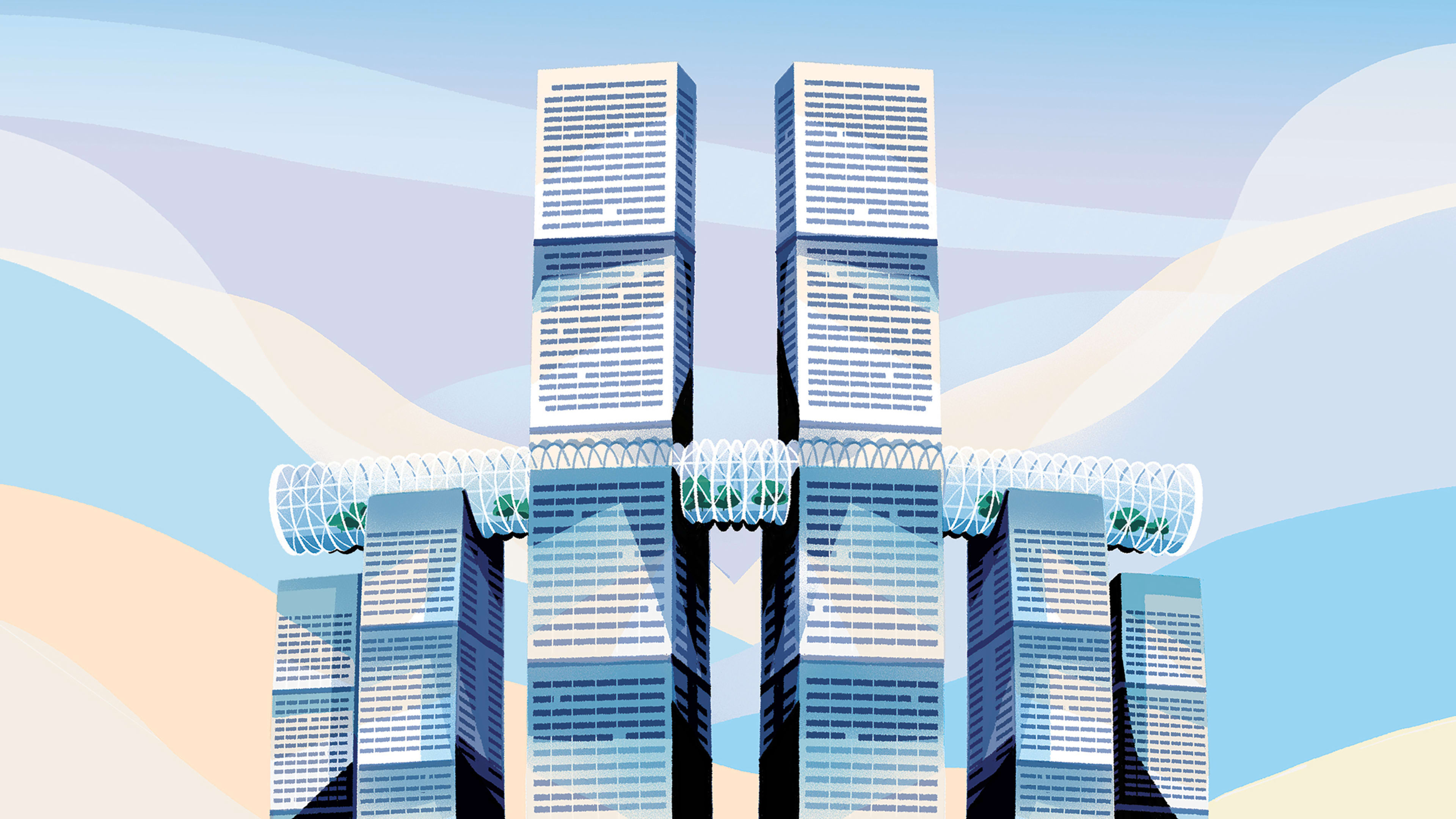After eight years of design and construction, the eight-tower Raffles City complex, in the southwestern Chinese city of Chongqing, is a striking landmark, with its two tallest towers rising 1,150 feet. Up in the sky, but also on the ground, the building creates new connections for the city’s 31 million residents, a mix of publicly accessible spaces unlocking its long-obstructed waterfront.

1. Waterfront Access
Located at the convergence of the Yangtze and Jialing Rivers, the skyscraper complex is set on a former traffic circle that blocked access to the waterfront for anyone who was not getting off a bus or ferry. Safdie Architects, renowned for founder Moshe Safdie’s cube-stacked Habitat 67, in Montreal, set out to restore that access. The design rerouted roads to make much of the nearly 1-million-square-foot site into a public park. A series of walkways and corridors draw pedestrians into the project and through the towers to reach the water’s edge.

2. Shopping With a View
The base of the complex houses a five-level shopping gallery with more than 230 stores. Because of the sloping site’s 115-foot elevation change, the shopping area is hidden, tucked mostly below the park and the residences, hotel, and towers. But even below pedestrian level, the mall complex features windowed corridors that keep the rivers in sight. “You’re always connected back to the water,” says architect Christopher Mulvey.

3. A Park in the Sky
The building also creates a bold new publicly accessible area high above the ground plane. Raffles City’s signature element is the 950-foot-long sky bridge that lies across the tops of its four central towers. It’s a rounded concertina-like structure that curves gently across the buildings to create commercial space in the sky.
Recognize your brand’s excellence by applying to this year’s Brands That Matter Awards before the early-rate deadline, May 3.
